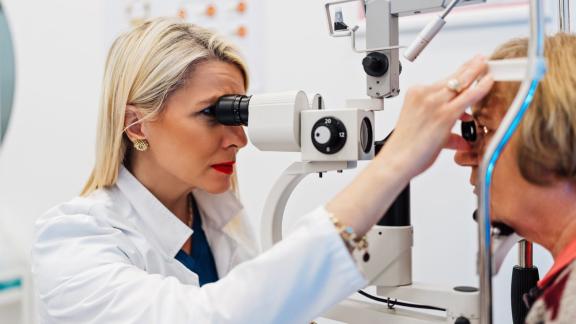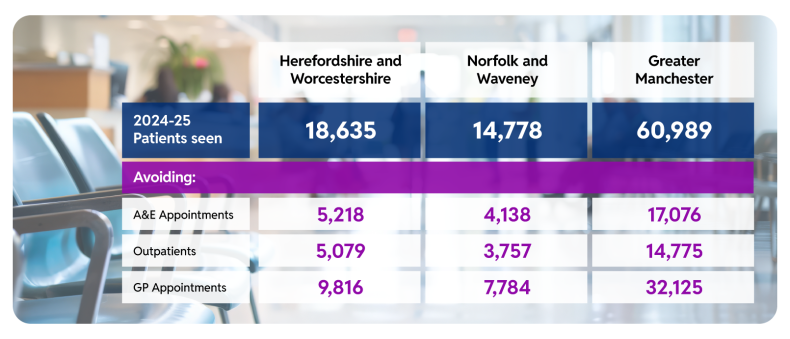Community Urgent Eyecare Service (CUES)

Overview
The Community Urgent Eyecare Service (CUES) is an NHS initiative designed to provide timely, accessible care for patients with urgent or minor eye conditions, such as flashes, floaters, red eyes and minor injuries, closer to home.
Delivered through local optometry practices and supported by Independent Prescribing Optometrists and advanced diagnostic tools, CUES aims to reduce pressure on A&E, GP and hospital eye services by managing patients in community settings.
What the organisation faced
Ophthalmology remains the largest outpatient specialty in England, with eye conditions also contributing significantly to A&E and GP attendances. There is a need to address long waits, unnecessary hospital visits and the growing demand for urgent eye care, particularly in deprived communities. The NHS 10 Year Health Plan called for more care to be delivered in community settings to relieve pressure on hospitals and improve patient access.
What was done
To address the rising demand for urgent eye care and reduce pressure on hospital and GP services, CUES via Primary Eyecare Services has been rolled out across 18 Integrated Care Board (ICBs) areas. The service is delivered through local optometry practices, allowing patients to access remote or face-to-face assessments without needing to visit A&E or their GP. CUES is powered by Independent Prescribing Optometrists and advanced diagnostic tools such as Ocular Coherence Tomography, enabling clinicians to work at the top of their licence and deliver high quality care within neighbourhoods.
Primary Eyecare Services works closely with ICBs to tailor the CUES service to local needs, exemplified by Greater Manchester’s “Get to Know Where to Go” campaign which has significantly raised public awareness. In Norfolk and Waveney, the CUES service is bolstered by a centralised virtual telemedicine model that supports local community capacity. Together, this local innovation demonstrates how strategic partnerships with ICBs enable scalable, patient-centred solutions that reduce pressure on NHS services and improve access to urgent eye care.
Outcomes
The impact of CUES has been substantial.
Nationally, in 2024/25, the service supported over 448,000 patients with 99% receiving appointments within the appropriate timeframe following triage. More than 80% of patients were fully managed within the service, reducing the need for onward referrals.
This translated into an estimated saving of 220,000 GP appointments, 125,000 A&E and urgent care attendances and 178,000 hospital eye service appointments, significantly easing pressure across the NHS.

Only 17.1% of patients required hospital referral and just 4.3% were referred to their GP.
Notably, 25% of patients accessing CUES were from the most deprived area (i.e. lowest two deciles), demonstrating that the service may also have a role to play in tackling health inequalities.
Further information
For more detail on this improvement insight, contact Primary Eyecare Services.
Also take a look at our new programme to support teams to understand, plan and create the infrastructure and processes needed to move ophthalmology services into the community.



